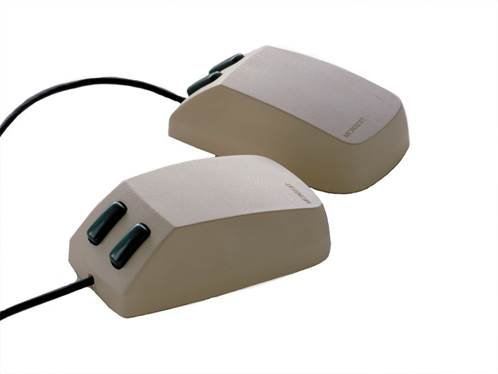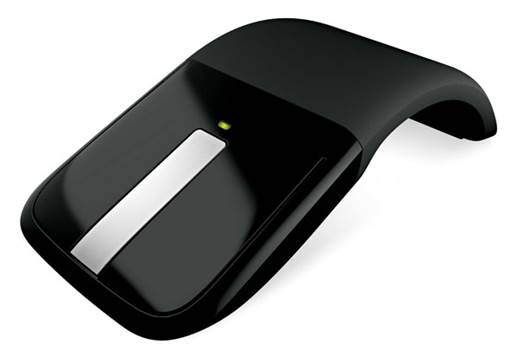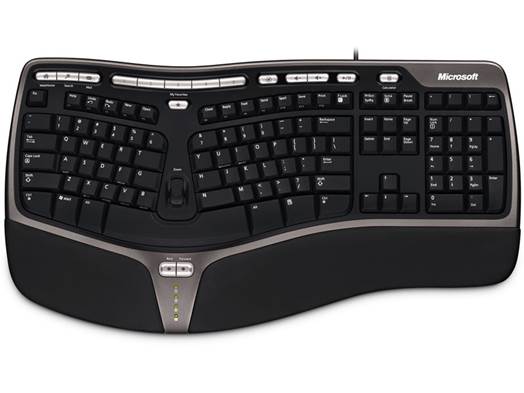Update & improve your computing
experience
The mouse and keyboard are your PC’s eyes
and ears; without them you could not execute commands or input text. In this
article we’ll highlight some of their important features.

Microsoft’s
first mouse was angular and beige, but its basic design hasn’t changed much
All about mice
As input devices go, the mouse has changed
very little since Microsoft used it to launch its hardware business in 1983. It
had a cord, right and left buttons, and a palm-sized body. Many modern mice are
wireless and use lasers, but newer devices are still perfectly recognizable as
mice and are used in the same fashion as a 1980s-era mouse.
Tracking technology
The most basic mice for sale today let
users manipulate the position of the pointer onscreen by mechanical means. A
rubberized sphere inside the mouse body contacts a pair of rollers that drive
gears, moving the mouse across a surface rotates the gears and the mouse’s
driver translates the movement to appear onscreen. These mice are very
inexpensive, but they tend to get clogged and require occasional cleaning.

This
mouse works much a traditional mouse, but it also supports touch input
In 1999, Microsoft launched an optical
mouse that used an LED and photodiodes to translate the mouse movements into
the cursor position. Later optical mice used tiny low-resolution image sensors
to track movement, enabling these modern optical mice to work on most surfaces.
Laser mice use infrared laser diodes to provide very precise movement data,
making it ideal for graphics professionals, engineers, and gamers.
Glass has been one of the few surfaces on
which modern mice still have trouble tracking, but with the introduction of
dual-laser and glass laser mice, reflective and transparent surfaces are no
longer a problem.
All about keyboards
Computer keyboards can trace their heritage
back to keypunch devices and typewriters from the late 1800s and early 1900s.
In the context of computing, keyboards have changed very little, as well.
Layout types
The standard keyboard offers roughly 100
characters for letters, punctuation, numbers, and function keys. Laptops tend
to have scaled-down keyboards, combining characters and actions that users can
access as if using standalone function keys. Smartphones and handheld devices
combine even more functions and use very small keys, suitable for thumbing.
Most keyboards feature the QWERTY layout,
which refers to the first six letters of the top row on the left side of the
keyboard. This layout traces its roots back to the 1870s, when E. Remington And
Sons, manufacturers of firearms and typewriters, sought to avoid placing
letters often typed together near one another, which significantly reduced the
frequency of jams on Remington’s mechanical typewriters.
Switch types

Using
an ergonomic keyboard can significantly improve your computing comfort
There are several different mechanisms used
to register keystrokes. Common switch types include full-travel membrane and
dome-switch keyboards that consist of plastic keys over a layer of rubber
domes. Some keyboards add springs to the rubber domes for more rapid feedback.
These keyboards are known for being relatively quiet and having a smooth
response. Mechanical switch and buckling spring-style keyboards have a rapid
response and tend to generate an audible “clack” when keys are pressed. These
keyboards have a very different feel to them, compared to rubber dome-style
keyboards. To determine which type you prefer, go to a local retailer and try
out a few.
A word about wireless
Both keyboards and mice come in wired and
wireless models. If cutting cord clutter matters to you, consider that wireless
mice and keyboards require batteries to operate. They also require either a
wireless dongle or a receiver at the end of a USB cord. The latter does add to
your wiring, but at least these units can be tucked out of sight.
Input essentials
You have a host of options when shopping
for new input devices. Considering them carefully is the key to ending up with
something that can make using your computer comfortable, satisfying, and even
fun.